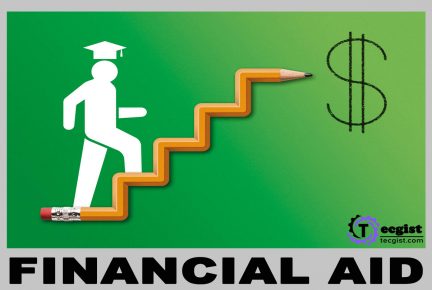Well, you’ve found the right place, if you want to know what financial aid means. Going to college involves not just learning but also dealing with money stuff. Understanding how financial aid works is key to making sure the cost of education doesn’t become too heavy. In this guide, we’ll dive into the world of financial aid.

What Is Financial Aid?
Financial aid is money for college that doesn’t come from your family or what you’ve saved up. It can be grants, scholarships, jobs you work during school, or loans from the government or private companies. This money can help pay for lots of college stuff like tuition, housing, books, and getting to campus.
Financial aid can come from different places like the government, schools, community groups, and companies. How much you get depends on the rules of each place and also on government and school rules.
Types of Financial Aid
Financial aid usually comes in one of these forms, whether it’s based on your needs or your achievements:
1. Grants
A grant is a type of financial aid that is awarded to students to help them pay for their education. You don’t have to pay back unless you don’t follow the rules, like dropping out of school. Grants can be from the government, schools, or other groups. They’re usually based on your financial need, but some are given for doing well in school or other reasons.
2. Scholarships
3. Work-Study/Non-Work Study
- A federal program that provides part-time jobs for undergraduate and graduate students with financial need.
- Students work on-campus or off-campus, typically in community service-related jobs.
- Pay is minimum wage or higher, and earnings are taxable.
- FWS is awarded as part of a student’s overall financial aid package.
- Students must apply for FWS through the Free Application for Federal Student Aid (FAFSA).
- Financial aid that does not require students to work in exchange for funding.
- Can include grants, scholarships, and loans.
- You can use NWS to help with financial needs, academic merit, or a combination of both.
- Students do not need to work to receive NWS funds.
- you can receive NWS through federal, state, institutional, or private sources.
4. Federal or private student loans
- Offered by the U.S. Department of Education
- Fixed interest rates (currently 4.53% for undergraduate and 6.08% for graduate students)
- Income-driven repayment plans available
- Forgiveness programs available (e.g., Public Service Loan Forgiveness)
- Deferment and forbearance options available
- No need for a credit check (except for PLUS loans)
- Subsidized and unsubsidized options available
- Origination fees apply (currently 1.057%)
- Offered by banks, credit unions, and other lenders
- Variable or fixed interest rates (currently ranging from 3.5% to 14.5%)
- Repayment terms vary by lender
- No forgiveness programs are available
- Deferment and forbearance options may be available but vary by lender
- Credit check required
- A cosigner may be required
- Origination fees may apply
What is the Best Financial Aid?
Grants and scholarships are considered the most desirable forms of financial aid because they offer free money to help students pay for their education, with no repayment obligations
